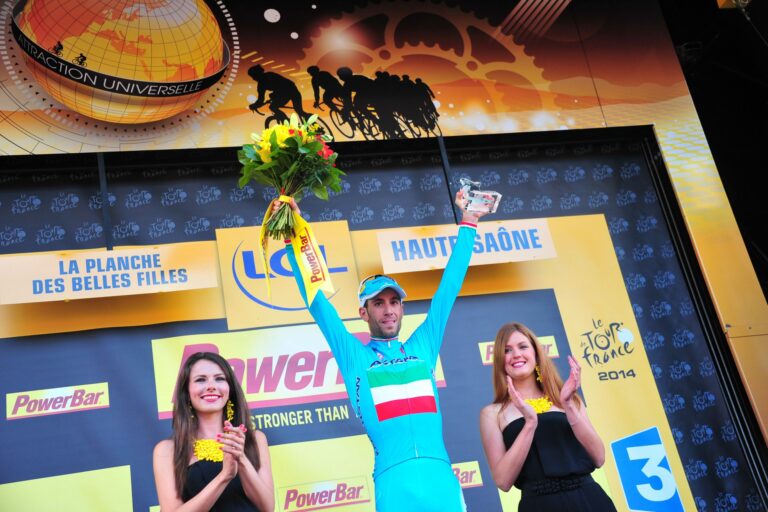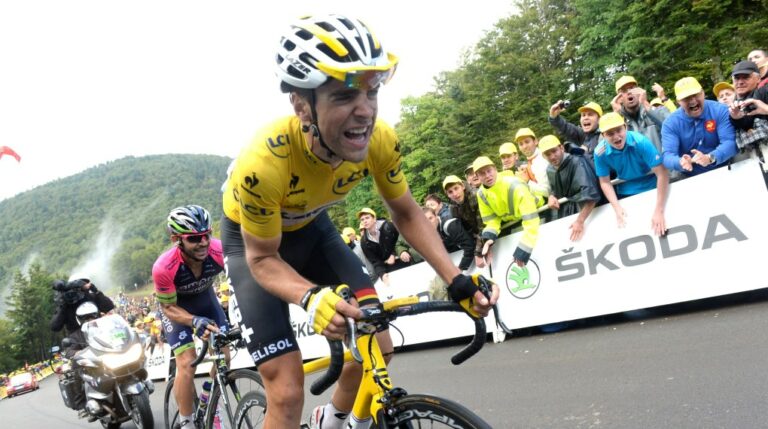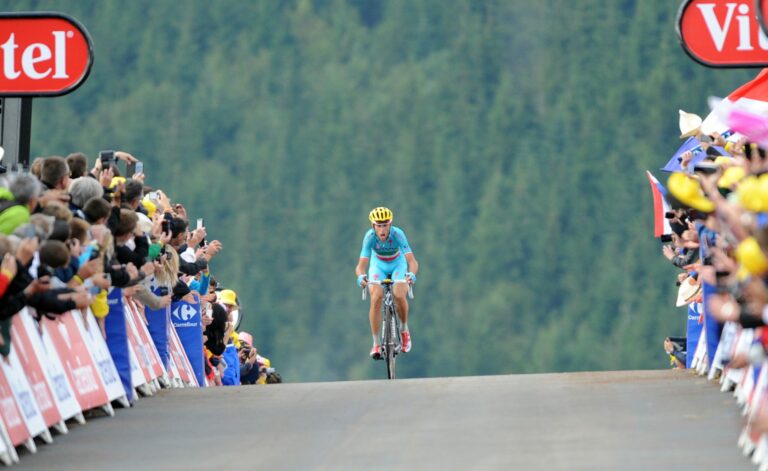The church bells toll as if to warn of the steepening gradient as the road snakes up the valley and, pedal stroke by pedal stroke, the summit inches closer.
The Passo Croce d’Aune is the final climb on the Gran Fondo Sportful and with the most punishing pitches, peaking at nearly 20 per cent and with long stretches over ten per cent, saved for the final four kilometres, serves as a leg-numbing sting in the tail after more than five hours in the saddle and approaching 3,000m of climbing already in the legs.

And that’s just the 134km ‘medio’ route – the full course packs in more than 5,000m of ascent into 204km. The event started life as the Gran Fondo Campagnolo (before Italian clothing brand Sportful, based closed to the start in Feltre, took over sponsorship) and marked its 20th anniversary this year, prompting the organisers to return to the original routes devised in 1995 and which helped it earn its reputation as one of the toughest sportives in the world.
Too tough for this rider, at least. After an enforced break of nearly three weeks off the bike in the build-up to the event, I took the decision to ride – and enjoy – the medio fondo (though Sportful’s definition of ‘medium’ varies wildly from any event you’re likely to find in the UK), rather than suffer like a dog around full gran fondo on a cool, wet day in the Dolomites.
Pulling back the curtains at first light at 5am and being greeted with rain lashing down, bouncing off the windowsill, is enough to fill any rider with dread ahead of a long day in the mountains but by the time I take to the start line in Feltre at 6.30am, the rain has ceased and has instead been replaced an electric atmosphere, whipped up by the compère as more than 4,500 anxious and excited riders prepare to roll out.

An Italian gran fondo is an altogether different event to a UK sportive – the ratio of shaved legs on show is testament to that. It is, in effect, an amateur race, at least at the front of the field. Gran fondo teams have a dedicated leader, with domestiques ready to sacrifice themselves in support of a united cause, and team cars and helpers at the roadside ready to hand-up food and bottles. The ‘race’ is effectively ridden at a pace which wouldn’t be out of place in the professional peloton. These guys are good.
I find out as much when the flag drops at 7am and, handed a starting spot in the VIP pen at the head of the field, roll out of Feltre with the front group. I look down at my Garmin and my speed is instantly approaching 30mph, pulled along by the bunch on the valley road which passes Sportful HQ. A constant stream of riders still sprints past in a bid to reach the front of the peloton ahead of the first climb, shared by both the medio fondo and gran fondo routes. Positioning is everything if you want to compete at the sharp end of a gran fondo.
Even in the slipstream of the bunch my heart rate is high – and that’s on the only significant stretch of flat road of the course – and so I swing to the side of the road to ride to the foot of the Cima di Campo at my own speed and continue on to the climb itself, 18.2km at an average gradient of six per cent, at a steady pace. It’s important at the start of any big ride or sportive, not least one in the mountains, to keep your powder dry early on, and I remind myself of that as riders continue to pass me on the lower slopes of the wooded ascent.

The road emerges from the forest at its summit and woodland is replaced by a rolling plateau, which drops away to offer stunning views of the mountains, with peak-after-peak laid on top of one another as far as the eye can see. At least, that’s what it should have looked like – and that’s what I saw on a previous visit to the region earlier this year – but thick cloud blocks the view and, as I zip up my gilet and pull on a pair of gloves at the roadside, cold and heavy rain begins to fall ahead of the fast descent to Castello Tesino.
It’s here that the route splits, with riders on the gran fondo continuing on to the Passo Manghen and Passo Rolle, and those on the medio fondo turning right to tackle the Passo del Brocon and Passo di Gobbera, before the two routes meet again ahead of the final climb of the Passo Croce d’Aune. My legs feel ok, considering the lack of recent miles, and, having traveled all the way to Italy, am tempted to continue straight on to tackle the full route – but with the rain continuing to fall and the very real prospect of nine or more hours in saddle on the gran fondo, head rules over heart and I turn onto the medio fondo – a decision mirrored by the vast majority of riders.
I dive in to the first feed station, grab a ham roll (‘real’ food is a God send on a sportive otherwise fuelled by energy gels and bars) and a cup of coke, and begin the climb of the Passo del Brocon, 13km at 6.2 per cent. By now the rain has stopped and, while the road on the Cima di Campo was packed full of riders in high spirits, lonely cyclists are now lined out on the road, beginning to suffer in silence as the road ramps up. I quickly find a rhythm, feeling relatively strong, making good progress and now steadily picking off riders. I’ve chosen a Shimano Ultegra-equipped Scott Addict 10 as my steed for the rider and it’s low weight of 7kg – reduced by 300g from the off-the-shelf spec by slotting in a lighter set of wheels and tyres for this event – and stiff, responsive chassis makes light work of climbing. Finally the cloud begins to lift and as I approach the summit, a clearing in the trees appears, the mountainside drops away, and a stunning view back over the valley appears, with snow-capped peaks in the distance and the remainder of the climb looming above.

The descent off the Passo del Brocon is superb. A narrow sinew of tarmac, carving a snaking path through the trees, technical enough to focus the mind, but fast and, with the road closed to traffic, one that can be taken with plenty of speed. It’s a chance to eat and drink as, in the Gran Fondo Sportful, what goes down, must comes up and, after crossing the Cismon river, the road soon heads uphill for the third climb of the day, the Passo di Gobbera. It’s a speed bump compared to the previous two ascents – 4.3km at 5.5km – and steady enough to attack at a fair pace having broken the back of the ride and with only the Passo Croce d’Aune to come. If the long descent off the Brocon was exhilarating, then the plummet from the 987m summit of the Gobbera, which the Scott Addict handles with reassuring confidence, is truly superb, with a fast, wide road, flawless tarmac, and eight switchback, rollercoaster hairpins stacked above the valley floor, which whistles into view as I reach a top speed of 80kph on the long final straight into the town of Imer.
The route then follows the ice-blue river, which carves its path through the narrow valley, bordered by mountains on either sides of its banks. There are 15km or so of very shallow descent into a headwind before the start of the Croce d’Aune and, with tired legs and a stiff climb to come, a small group forms and, with one Italian rider particularly happy to push the pace on the front, we make short work of the valley road, flashing in and out of a series of pitch black tunnels which force their way through the mountain, riding at more than 30mph in a well-organised, tightly-packed peloton.
Of course, that group disintegrates as we turn on to the Croce d’Aune. All in all it’s an 11km climb at an average gradient of 5.4 per cent, but that average is stifled by three kilometres of false flat in the middle. By this point I am still feeling ok, have paced the ride well so far and stayed well fuelled, so I rise out of the saddle and use each rider ahead of me as a marker. It’s a varied climb and that keeps the mind occupied this late into the ride. Three initial hairpins are replaced by a winding road which passes through a couple of small villages. I have been warned in advance that the gradient is at its most severe as the road passes the church but in this part of Italy – and particularly on this climb – there is seemingly a church on every corner. It’s a beautiful ascent, too, with the road hugging the mountainside, blanketed with trees. By now the sun is shining and the air warm. This is a stunning part of Italy and, while the weather didn’t play ball on our ride (such is the unpredictable climate served up by the mountains) one which offers endless opportunities to ride your bike, day after day, without barely seeing the same road or climb.

The gradient begins to ramp up and by now that’s taking its toll on every rider on the climb. I’m thankful I stepped off the gas earlier in the day as I continue to pass riders and one cyclist is on foot as I enter the cruelly steep double-switchback marked by the tolling church. A sign marks two kilometres to the summit and I glance right across the valley to see the road disappearing over the pass. It looks more than two kilometres and, with the gradient showing no sign of easing, by now it hurts – but that’s why we’re here, right? I pass another rider on foot but this time his chain has snapped – so near but so far.
And finally, the summit. It’s marked by a memorial to Tullio Campagnolo as it was on the Passo Croce d’Aune (albeit climbing from the other side) in November 1927 that the young Italian racing cyclist was leading the GP della Vittoria but needed to change gear. That required the rider to flip the back wheel but, with the wing nuts frozen and Tullio’s hands bitterly frozen, he uttered “Bisogno cambiá qualcossa de drio” or “Something’s got to change at the back here.” Tullio went back to his workshop and invented the quick release skewer, followed by the Gran Sport groupset in 1949. Times have changed, of course, and I was glad to have a bottom gear of 34-28t on the steepest sections of the climb, but it’s here that a significant part of cycling history was born and why the original Gran Fondo Campagnolo chose to use the climb.
I flick the front derailleur on to the big ring, move down the block on the rear cassette – two luxuries afforded to the 21st Century cyclist – and begin the descent. It’s another thrilling stretch of road, with long straights intersected by flowing hairpins. Feltre pulls into view and from the bottom of the descent there’s just six kilometres to the finish, which itself sits at the top of a short but steep cobbled climb which, if the Croce d’Aune was a sting in the tail, is a final hammer blow on the legs dished out by the event’s organisers.

The Gran Fondo Sportful is a tough but beautiful event – one of the most prestigious in Italy but largely unknown and ignored by UK riders in search of a European challenge. The gran fondo route is a huge undertaking – the stats speak for themselves – but the medio fondo still represents a significant challenge, albeit one that can be enjoyed by a well-prepared rider, with long but steady climbs, thrilling descents and superb views. Feltre itself is a beautiful old mountain town and the circular route bypasses some of the logistical challenges served up by other European events. I roll from the finish to the pasta party in the town’s ice hockey stadium, wolf down a plate of food, return to the hotel to shower and walk back into town to watch the leaders of the gran fondo route come in, enjoying the view from a roadside bar with my fellow riders, ‘recover beer’ in hand. Several hours later I’m still there and, with beleaguered cyclists still rolling in nearly 12 hours after starting the gran fondo route, I’m secretly glad I made that right turn on to the medio course.
Website: Gran Fondo Sportful





